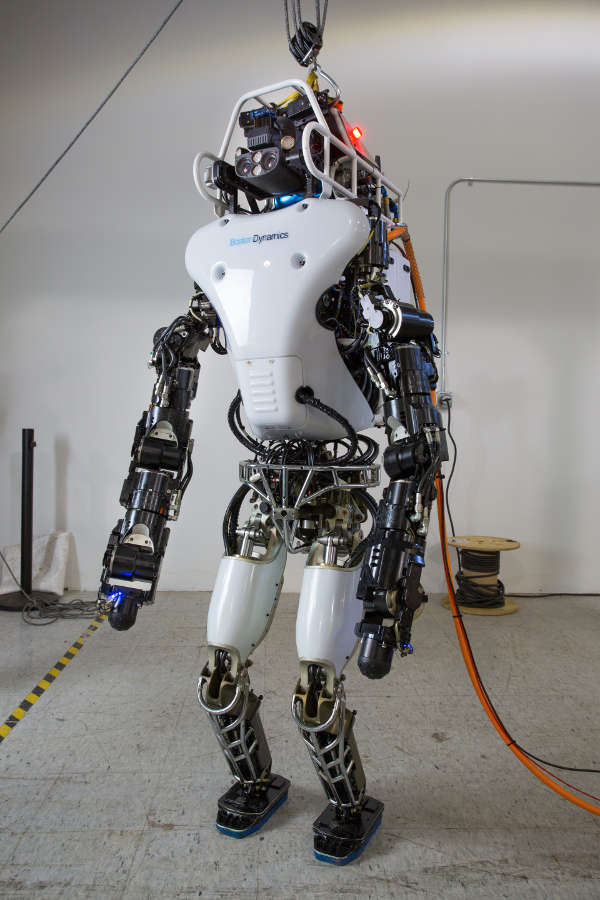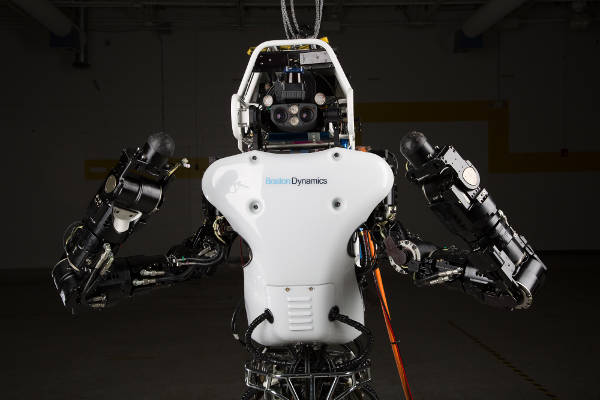| Atlas Rebuilt - DARPA's Almost New Robot |
| Written by Harry Fairhead |
| Wednesday, 21 January 2015 |
|
DARPA's Atlas robot is designed for its Robot challenge and in its first version it was impressive, if slightly threatening. Now it's back with an upgrade and its 75% new and amazing. Atlas was the robot from sci-fi, big, black and powerful - only it had these cables that provided it with power and made it look a little like a dog on a leash. It was designed to provide a hardware platform for teams competing in the DARPA Robotic's Challenge DRC - a competition designed to encourage the construction of an effective disaster response robot. Now it has been revealed that the finals of the DRC require that the robot used not to have a tether and hence Atlas needed a redesign.
The new Atlas has no wires of any kind and hence is described as "wireless". This is achieved by fitting an onboard 3.7 kilowatt-hour lithium ion battery. This is used to drive a variable-pressure pump which operates all of the hydraulic systems. This makes ATLAS much quieter but introduces a complication for the teams. The pump can be run at low pressure to save battery and then switched into high pressure to get some work done. What this means is that not only do the teams have to worry about robotic things they also have to manage the power consumption as if ATLAS was a mobile phone. Other new features according to DARPA are:
You can see it in action, minus the new electric arms, in the following video:
The upgraded robots should be delivered to the teams at the end of the month. This part of the DRC is particularly interesting because all of the Atlas teams have the same hardware. The only differences in performance have to come down to the software in use. There is also news of the DRC in that the prize has been increased to $3.5 million - $2 million to the winner, $1 million to second and $500,000 to third place. The details of the challenge have also been clarified:
Given the not to impressive performance of the robots in the first round of the DRC last year these condition seem harsh indeed. Equally Atlas isn't Nao and one of these falling over and getting back up is difficult to imagine. The teams are allowed to use a tether to stop their robot falling while they are testing but come the big day the cords will have to be cut.
Finally while the new Atlas looks good the plastic covers make it look far less threatening.
More InformationRelated ArticlesGoogle's Schaft Wins DARPA Robotics Challenge DARPA's Robot Challenge Gets Underway Google Adds Boston Dynamics To Its Robotics Acquisitions DARPA'S ATLAS Robot Needs A Brain
To be informed about new articles on I Programmer, install the I Programmer Toolbar, subscribe to the RSS feed, follow us on, Twitter, Facebook, Google+ or Linkedin, or sign up for our weekly newsletter.
Comments
or email your comment to: comments@i-programmer.info |
| Last Updated ( Sunday, 13 November 2022 ) |



